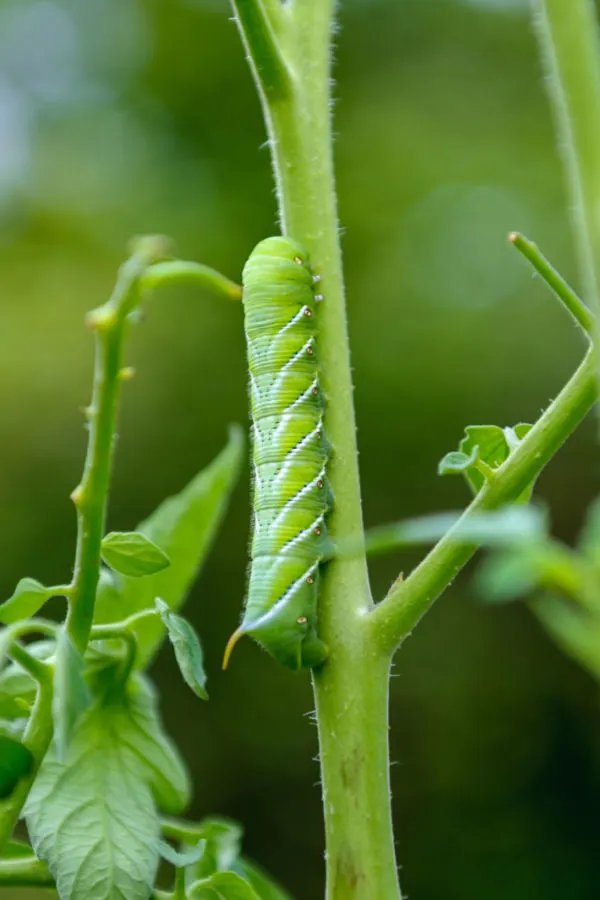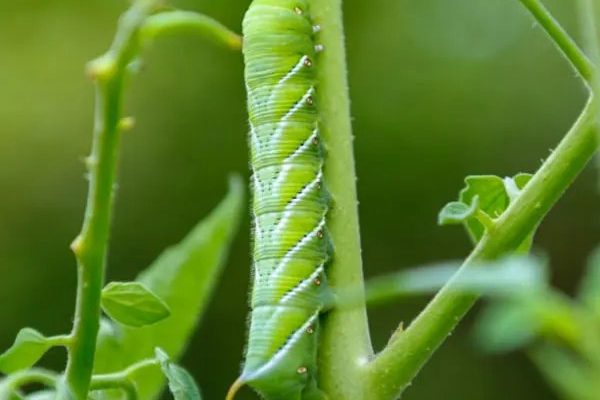
In this article, we’ll dive deep into hornworms and companion planting, exploring what works and how you can turn your garden into a haven for healthy plants. Picture it like assembling a team of superheroes where each plant plays an essential role in outsmarting the villainous hornworms. Let’s roll up our sleeves and get into the dirt!
Understanding Hornworms
If you’re new to the gardening scene, you might be scratching your head wondering, “What exactly is a hornworm?” These caterpillars, specifically the tomato hornworm and the tobacco hornworm, are the larval stage of moths. They’re usually bright green and can grow up to 4 inches long. When they munch on your plants, they can quickly strip away all the leaves, which is a huge bummer!
Now, what’s fascinating about hornworms is that they blend in beautifully with the plants they eat, making them hard to spot. This camouflage helps them survive, but it’s also why you might not notice them until the damage is done. They love feasting on nightshades, which include tomatoes, peppers, and eggplants. So, if you’ve got a garden full of these, hornworms could become a bit too cozy for comfort.
But don’t get discouraged! While they can be a pain, there are ways to manage them effectively, and that’s where companion planting comes in.
The Basics of Companion Planting
Companion planting is the practice of growing different plants together for mutual benefit. It’s like hosting a potluck dinner where everyone brings something to the table. Some plants can attract beneficial insects that prey on pests, while others can enhance each other’s growth or deter harmful insects.
For instance, you might plant marigolds alongside your tomatoes. Marigolds emit a scent that repels hornworms and other pests, creating a protective barrier around your edible plants. It’s all about finding those harmonious relationships between plants that will help each other thrive while keeping unwanted pests at bay.
When planning your garden, think strategically. Consider which plants work well together and how they can support each other’s growth. You’ll not only get a more vibrant garden, but you’ll also reduce the need for chemical pesticides, which is a win-win!
Effective Companion Plants for Hornworm Control
Now that you understand the concept, let’s talk about specific plants that can help you battle those pesky hornworms. Here’s a shortlist of some effective companions:
- Marigolds: As mentioned, these flowers are fantastic for deterrence. They attract beneficial insects and repel harmful ones.
- Basil: This aromatic herb not only elevates your culinary game but also repels hornworms and other pests.
- Garlic: Planting garlic nearby can create a strong scent that hornworms don’t like. Plus, you can enjoy your own fresh garlic in the kitchen!
- Nasturtiums: These cheerful flowers not only attract pollinators but also serve as a trap crop, drawing pests away from your more valuable plants.
Each of these plants has its role, kind of like a superhero team-up. When you plant them in proximity to your tomatoes or peppers, you create an ecosystem that’s less inviting for hornworms.
How to Implement Companion Planting
Getting started with companion planting isn’t rocket science, but it does require a bit of planning. Here’s a simple step-by-step guide to help you set up your garden for success:
1. Choose Your Plants: Think about what you want to grow and which companion plants will provide the best support. Consider what you enjoy eating, too, since it’s great to have both functional and enjoyable plants in your garden.
2. Plan Your Layout: Sketch a rough design of your garden. Place companion plants near those they support. For example, plant marigolds around your tomato patch.
3. Prepare Your Soil: Good soil is the foundation of any garden. Make sure your soil is rich in nutrients. You might need to add compost or organic matter.
4. Plant and Observe: Sow your seeds or transplant young plants according to your design. Keep an eye out for any changes or pest activity, adjusting your layout as needed.
5. Maintain Your Garden: As your plants grow, continue to care for them. Regular watering and gentle weeding will help them thrive.
Companion planting isn’t just a one-and-done strategy. It’s about learning and adapting, so don’t hesitate to make changes!
Challenges and Considerations
While companion planting can be effective, it’s not a perfect solution. You might find it tricky to get the right combination of plants that thrive together. Some plants simply don’t get along, and it can take a bit of trial and error to find the best companions for your garden.
Also, environmental factors like soil quality, sunlight, and weather conditions can influence how well your plants grow together. If one plant isn’t thriving, it might throw off the balance of your whole garden.
Don’t get discouraged! Every gardener faces challenges. The key is to be flexible—maybe try moving plants around if you notice one struggling. Gardening is as much about experimentation as it is about nurturing.
Enhancing Your Garden with Natural Predators
Another layer of hornworm control involves inviting natural predators into your garden. Think of this as bringing in the *A-team*—ladybugs, lacewings, and parasitic wasps are all excellent allies. These beneficial insects naturally keep harmful caterpillar populations in check.
To attract these helpful critters, you can plant a variety of flowers, like dill or fennel, which are known to lure them in. Having a balanced ecosystem in your garden not only helps manage pests but also promotes healthy soil and plant growth.
So, while companion planting is a fantastic tool, don’t forget to embrace the whole community that can be created in your garden. It’s about building a thriving environment where every plant and insect has its place.
Final Thoughts on Hornworms and Companion Planting
Dealing with hornworms can feel daunting, but companion planting offers a natural solution to help keep them at bay. By selecting the right companion plants and fostering beneficial insect relationships, you can create a healthy garden that thrives without the overuse of harmful chemicals.
Remember, gardening is a journey filled with learning experiences. So, don’t hesitate to experiment, learn from your mistakes, and share your successes. By embracing companion planting, you’re not just protecting your plants; you’re creating a harmonious ecosystem that can flourish for years to come. Happy planting!

